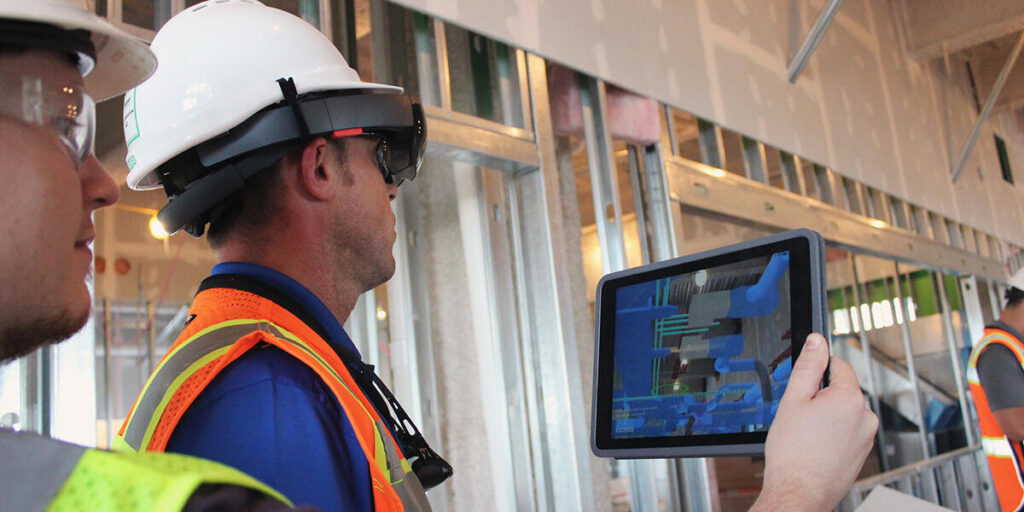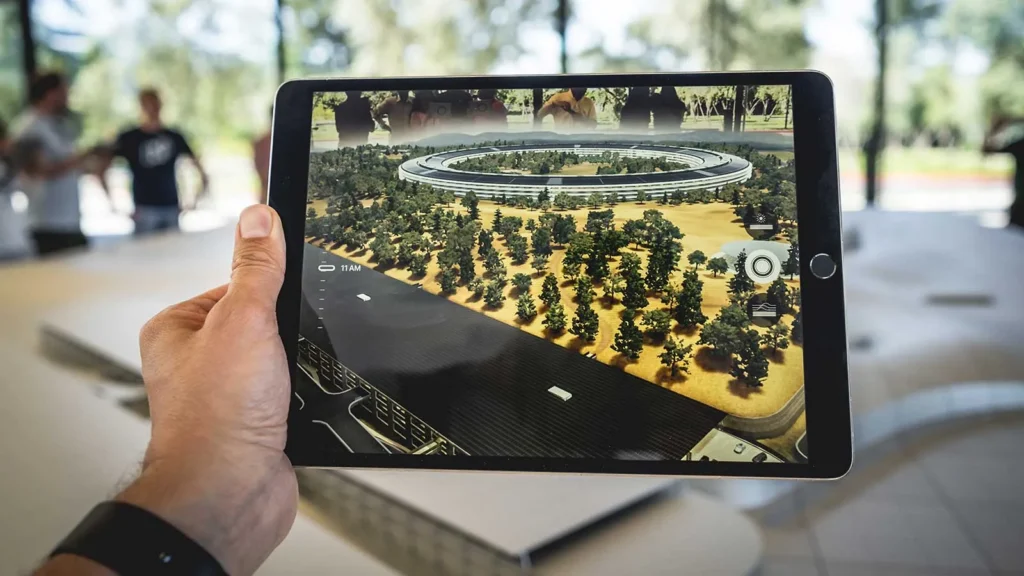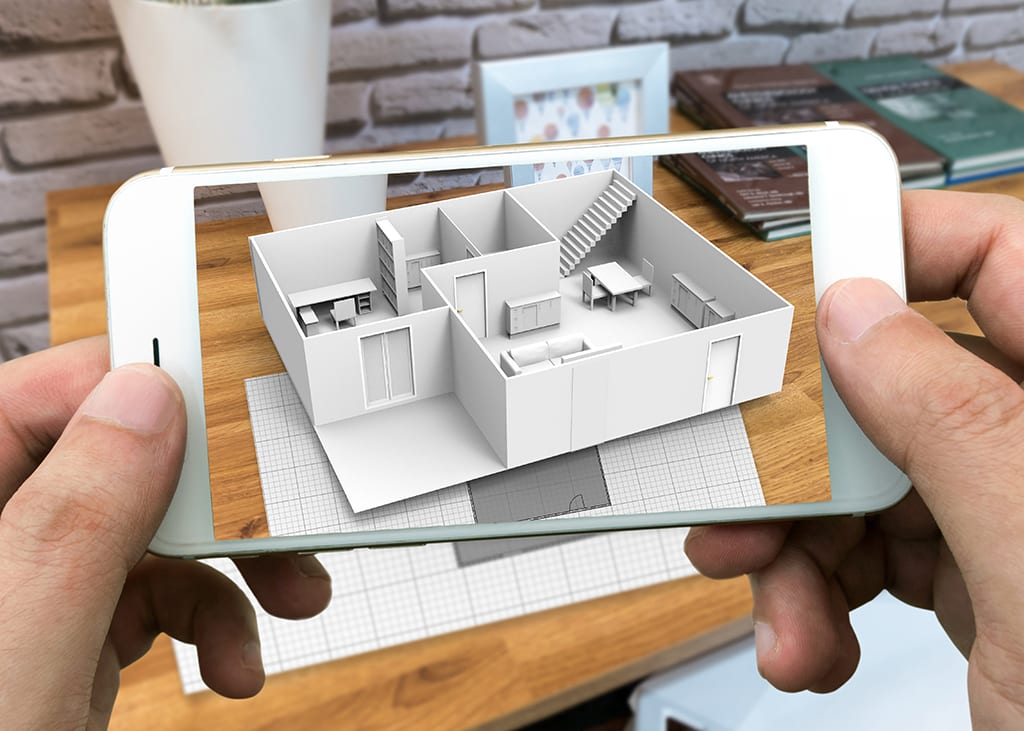Every day, new technologies and ideas emerge to increase safety, efficiency, and productivity in the construction sector. Augmented reality (AR) is one such technology that has garnered much attention in recent years owing to its potential to change how construction projects are planned, constructed, and performed.
AR is a powerful technology that can also assist pipe fitting contractors, electricians, machinery installers, and much more. AR technology enables users to superimpose digital information on the actual environment, resulting in a highly immersive and engaging experience that may improve stakeholder decision-making, communication, and collaboration.
This article will give insights into the fascinating world of augmented reality and its influence on the construction sector. So whether you are a construction expert, a technology enthusiast, or just inquisitive about the newest innovations in the sector, read on to find out more about this technology.
Traditional practices in construction

Source: pepperconstruction.com
Construction has been a part of human society for centuries, and numerous standard techniques for planning, designing, and executing these projects have evolved over time. These strategies have shown to be dependable and efficient in producing high-quality buildings, roads, and infrastructure that meet societal demands.
The usage of 2D and 3D drawings is one of the most prevalent traditional approaches utilized in building. Architects and engineers create these drawings, to give a precise depiction of the project. Construction teams use them to comprehend the building’s design and layout, as well as to plan the sequence of construction tasks.
Physical models are another frequently utilized traditional approach to building. Physical models enable architects and engineers to see the building in three dimensions, and they are often used to demonstrate the design to clients and stakeholders.
Traditional building techniques, such as human labor and traditional technology, are still commonly utilized in the business in addition to plans and models. Skilled craftsmen, such as carpenters, electricians, and plumbers, utilize their knowledge and instruments to construct and install different construction components.
These tried-and-true methods have provided a solid foundation for the industry, ensuring that buildings and infrastructure are built to last and serve the needs of communities for generations; however, as times have changed, the need for project speed and accuracy has increased significantly.
As a result, it is critical that we acquire newer technologies as we traverse through the generations.
What is Augmented Reality?
Augmented reality is a technology that combines digital information with the actual world to improve the user’s experience of their surroundings. It is a medium that allows people to engage with and interpret digital content as if it were a natural part of their surroundings.
Imagine strolling along a city street and seeing digital information superimposed on top of buildings and street signs, giving you directions, restaurant ratings, and historical information about landmarks. This is achievable with augmented reality because digital information is smoothly merged into the user’s visual field, producing a completely immersive experience.
In contrast to virtual reality, which transfers users to a completely digital world, augmented reality improves or “augments” the user’s real-world experience. This technology has a wide range of uses, including gaming and entertainment, as well as education, healthcare, and even military training.
In essence, augmented reality enables us to view and experience the world in novel and fascinating ways, blurring the distinction between the physical and digital domains and opening up new avenues for innovation and creativity.
How does AR help in construction?

Source: alpinme.com
Let us have a look at the ways AR may help with construction projects.
Training for site-safety
Construction is an industry where safety is of utmost importance. Workers must be well-trained before they operate heavy equipment or work on multi-story scaffolds, not just for their safety but also for the safety of others. However, safety training can be expensive, time-consuming, and risky for inexperienced workers.
To address these challenges, AR technology can be used to simulate safety scenarios and tools, providing trainees with a safe learning environment where they can learn from their mistakes. The highly detailed programs enable trainees to transfer their newly acquired skills to the real world.
Visual simulation
AR technology can also provide real-time project information to field workers. By using an AR headset, workers can see how the finished project will look, even when they are still in the planning and construction phases.
This allows them to compare what they see to the building plan and make necessary adjustments, such as correcting minor mistakes or repositioning a door or window. By identifying and correcting errors early on, workers can save time and avoid costly rework.
Proper communication
The collaborative nature of construction requires effective communication and teamwork. However, not all contractors can be physically present at the job site at all times. AR technology can help bridge this gap by allowing remote workers to inspect the job site as if they were there in person.
This enables real-time collaboration to solve problems and fix errors without the need to wait for a specific contractor or decision-maker to be physically present. AR technology also enables workers to take photos or videos of issues, which can be viewed and commented on by remote teams.
Effective project planning
Project planning is another area where AR technology can be useful. Advanced 3D modeling software and Building Information Modeling (BIM) have revolutionized the design and planning processes.
AR technology enables owners to take virtual walkthroughs of buildings in progress and see how changes will be incorporated into the design. This helps to find mistakes early on and ensures that all project stakeholders are on the same page.
Easy modifications
AR technology can also be used to modify projects. With a detailed augmented reality display, engineers can easily change the layout of walls or other structural components and systems. They can see how these changes will affect other systems and identify any incompatibilities.
Accepted changes are updated in real-time, reducing the risk of workers following outdated plans and minimizing the chances of costly oversights.

Source: realprojectives.com
Conclusion
AR technology has many applications in the construction industry. From safety training to project planning and modification, AR can enhance productivity, improve safety, and save time and money.
By providing workers with a safe learning environment, real-time project information, and collaborative tools, AR can help construction companies achieve their goals and deliver high-quality projects.



